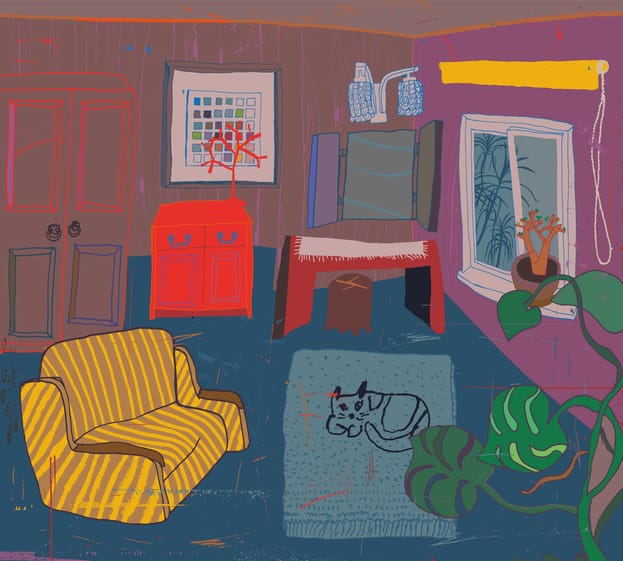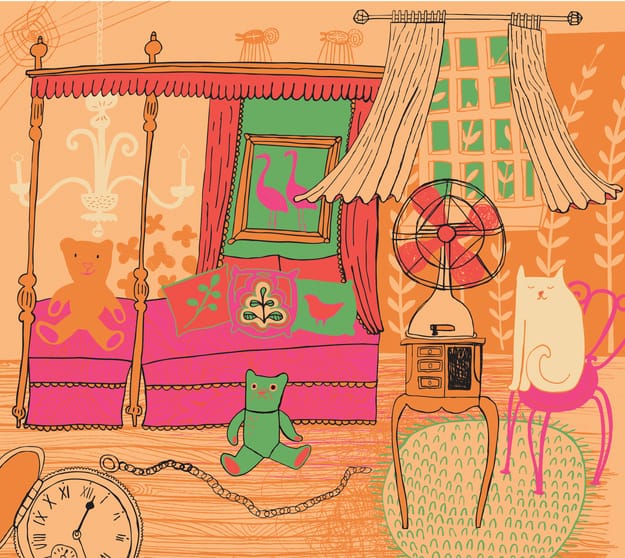“Beauty” is not the sexiest word.
Plato, Kant, and other thinkers have given it their attention, yet many of us don’t think of beauty as a particularly urgent matter. Instead, “self-improvement” literature loves the practical: overcoming procrastination, for example, or building micro-habits that make you feel better about yourself. And you can’t exactly blame us.
In a time of economic uncertainty, who cares about beauty? Who cares what things look like when we can’t agree on what beauty even is? To make matters more complicated, many of us (thanks to Internet marketing) associate beauty with human appearance and unrealistic cultural standards. If anything, beauty has become a negative thing. A dangerous thing.
Despite all this, beauty still matters. Nor am I talking about the poetic metaphorical kind of beauty that “is in your soul,” although that matters too. I refer to actual physical beauty, just not in humans.
As it turns out, there are good reasons to believe that beauty does matter to our well-being. And those reasons are all around us.
We Are Sensitive to Our Environment
Call it beauty, aesthetics, a “vibe” or something else: our physical surroundings affect us. Shape and color make up every square inch of our existence. All of us have walked into a new room or building at some point and immediately felt a shift in our mood.
The writer and philosopher Alain de Botton notes:
“If one room can alter how we feel, if our happiness can hang on the colour of the walls or the shape of a door, what will happen to us in most of the places we are forced to look at and inhabit? What will we experience in a house with prison-like windows, stained carpet tiles, and plastic curtains?” 1
De Botton’s question stands at the intersection of science and philosophy. What will we experience in a dim room versus a bright one? Or one that’s dirty versus one that’s clean? One with saturated colors and one with earthen colors, and so on.

Up to a point, the answer is straightforward. Scientists have done experiments to reveal how things like dirt, overly bright lighting, loud noises, and clutter make us anxious and distracted. None of this is too surprising.
But what about the curves and angles of our furniture? What about the color of our walls or the things we hang on them? More than any other place, our homes affect us because of the time we spend there, to the point that they form us. Our homes reveal who we are.
Your Home Shapes and Reflects You
“Our house,” writes the French philosopher Gaston Bachelard, “is our corner of the world…it is our first universe, a real cosmos in every sense of the word.” 2
He argues that our homes nurture us from childhood, each nook and gable playing a role in our thoughts, daydreams, and identity. “I should say,” he goes on, “the house shelters day-dreaming, the house protects the dreamer, the house allows one to dream in peace.”
My home as a child was modest, but it allowed me to dream and think. My mom put a lot of thought into arranging the furniture and keeping things clean (and taught me later to do the same). There were books on bookshelves and artworks on the walls. My stable environment laid the foundation for the human I evolved into.

Not everyone’s early home is a place of peace and order: this is a truth we have to face. Yet each of us, as we grow older and more autonomous, can choose how we will shape our environment — whether our home is a whole house, an apartment, or a single room. We can choose to make it like our childhood home, or the complete opposite.
Alain de Botton speculates that our sensitivity to our environment has to do with a sort of inner conflict:
“Our sensitivity to our surroundings may be traced back to a troubling feature of human psychology: to the way we harbour within us many different selves, not all of which feel equally like ‘us’, so much so that in certain moods, we can complain of having come adrift from what we judge to be our true selves.”
Think of your “self” who loves reading, and how walking into a den filled with leather-bound books reignites that part of you. Or your “self” who loves cooking and sees a bare granite kitchen island with the same promise as a blank canvas.
By designing our homes how we want, we remind ourselves of who we are and who we want to become
Now think of the vague sense of despair that filled you the last time you entered a home that was either too sterile or filled with too many things that didn’t feel like any of your “selves”: bookshelves lined with dusty old memorabilia, for example, or smelly candles, or wall art with pre-fabricated wisdom (“Love, Laugh, Live”).
Our homes tell us and our visitors about who we are, what we like, what we do, and even what we believe. We can take this one step further: By designing our homes how we want, we remind ourselves of who we are and who we want to become. We reinforce our “self” (or multiple selves), and we communicate that to others who enter our homes.
Your home is an important part of you, and for that reason, your home should be beautiful, especially if you want a greater daily sense of well-being.
Now comes the tricky part: What is beauty?
Beauty Is Both Different and the Same for All of Us
The neurobiologist Semir Zeki is so interested in the notion of beauty and well-being that he helped coin a new term: neuroaesthetics.
In a 2004 study 3 Zeki studied brain scans of people who looked at different types of art that they deemed either beautiful, ugly, or neutral. As it turned out, while responding to “ugly” art activated different parts of the brain for different people, the same parts of the brain – most notably, the orbitofrontal cortex – would “light up” in all participants whenever they viewed something beautiful.
But while Zeki was able to better discover how we process and interpret things that are beautiful (or ugly), his study wasn’t able to define beauty in “neural terms.” In other words, we can observe the effects of beauty, but we can’t explain what beauty is.
A more recent study on neuroaesthetics confirms this: it seems that while our neurons are involved in deciding if something is beautiful and brings us joy, what is “beautiful” will look different for each one of us. In conclusion, “a need to experience beauty may be universal, but the manifestation of what constitutes beauty certainly is not.” 4
Or in the much more eloquent words of the 19th-century writer Stendhal: “There are as many styles of beauty as there are visions of happiness.”


As much as you might sing the praises of a mid-century modern look, your friend may prefer a cozy hobbit-inspired cottage, and in either case, this is partly rooted in neurology and shaped and reinforced by our personalities, lifestyles, and perhaps more mysterious factors. There’s no need to argue over which is better; each of them reflects each of you.
If you’ve ever lived with a partner or roommate, though, you understand how tricky this issue becomes. It can feel all but impossible to decide on a unifying theme, color scheme, or even where the accent chair should go. This challenge is also an opportunity to better understand our loved ones and what their “selves” think is beautiful. The home you decorate together is a reflection of your fused needs and visions.
Nor do you need a lot of money to make your home beautiful. Creativity and intentionality matter much more, and so does taking your time. A unique home does not come together overnight. It’s a habitat that evolves over months and years as we curate things we like and throw away things we don’t. As we develop, so will our homes.
Since everyone’s idea of beauty is different, I won’t offer any rules for how your spaces should be shaped or outfitted, or what colors you should use, or whether or not you should keep your curtains open. But if you need some inspiration to help you get started, I do offer you this advice from 19th-century Arts and Crafts designer William Morris:
“Have nothing in your houses that you do not know to be useful or believe to be beautiful.”
When you organize your home to be useful and beautiful to you, you are discovering and reaffirming who you are. In doing so, you create a sanctuary that provides happiness and tranquility every time you rest there. No, it won’t solve the world’s problems, but it will create an atmosphere that clears your mind and gets you one step closer to doing so.
Footnotes
- de Botton, A. (2006). The architecture of happiness. Pantheon Books.
- From The Poetics of Space.
- Kawabata, H., & Zeki, S. (2004). Neural correlates of beauty. Journal of Neurophysiology, 91(4), 1699-1705.
- Conway, B. R., & Rehding, A. (2013). Neuroaesthetics and the trouble with beauty. PLoS Biology, 11(3), e1001504.

One response to “Beauty and Design Matter to Your Happiness”
Well said.